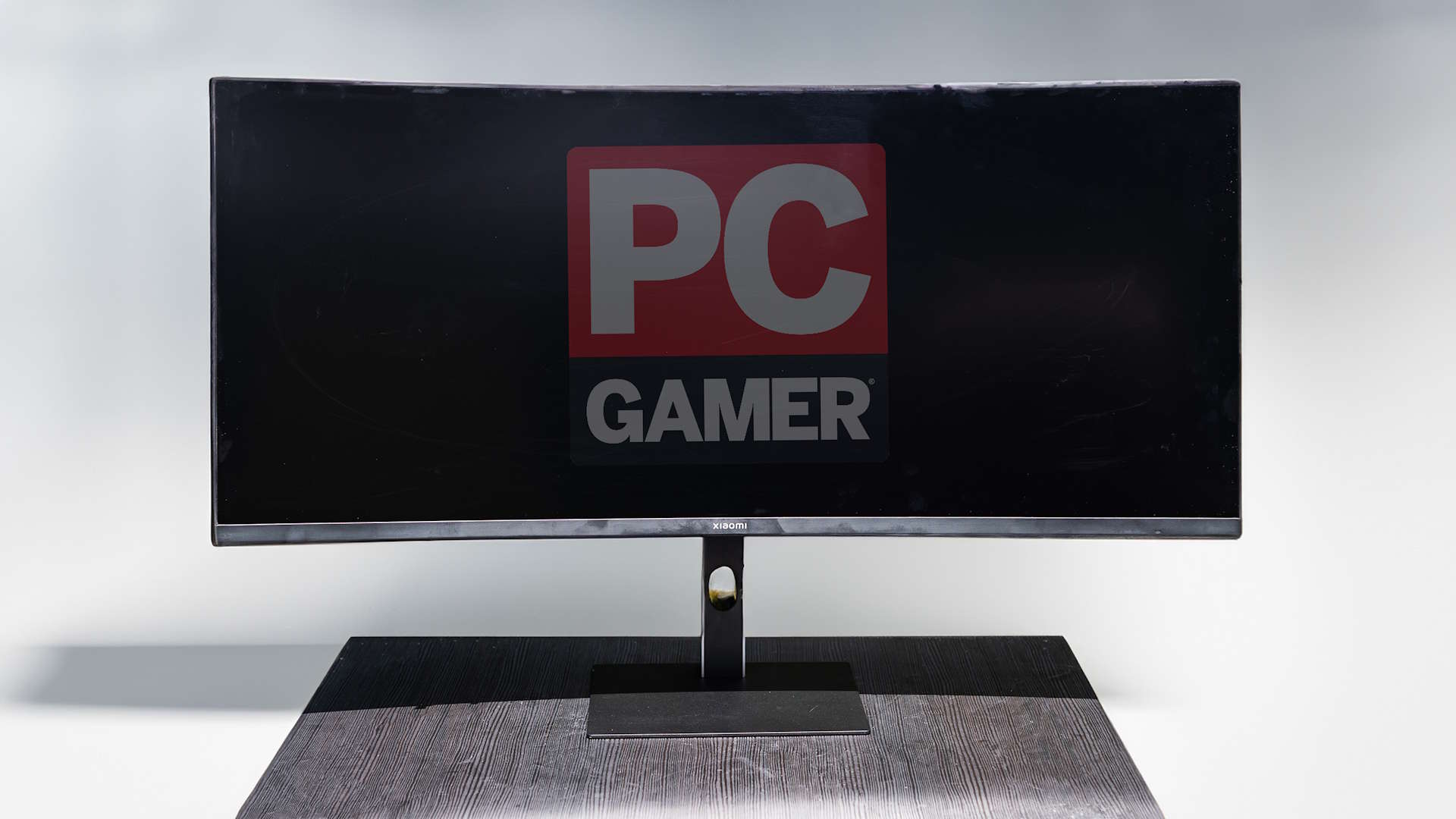
A fast bend that's not just for racing games.
Curves, eh? Curves, curves, curves. Not only is an opening like that going to bring in traffic from the seedier corners of Google search results, but it sums up the way your brain works when you’re faced with a curved monitor. Unless you’ve been using one for some time, it’s hard to sit in front of a curved monitor, even one as gentle as this one, the Xiaomi G34WQi, and see anything but the curve. CRT monitors used to bulge toward us, but now this one is there in your peripheral vision, the wider-than-wide aspect ratio offering you a slice into games that’s more immersive than ever.
The Xiaomi G34WQi isn’t the largest ultrawidescreen out there, and it doesn’t have the most aggressive curve, though it is an impressively affordable one. The smartphone maker first touted its monitors back in 2019, and it’s taken a while to start selling them outside of China. It offers a gentle 1500R—that’s R for radius, and the 1500 bit describes a circle which measures 1500mm to the middle; the monitor thus describes an arc along the circumference of that circle. Remember the bits of geometry at school you slept through, thinking you’d never need? Well this is it, here in the real world. And there’s no point always having a calculator in your pocket if you can’t remember the formulae.
Naturally, no one at PC Gamer can remember the formulae either, but it doesn’t matter. What you need to know is the higher the number, the more gentle the curve, because you’re arcing along the outside of a larger circle. So 2000R would be less curved, closer to flat, while 1000R would wrap further around the sides due to the imaginary circle being smaller.
The aspect ratio of this 34-inch Xiaomi screen is 21:9, making it perfect for watching movies such as Avatar 2 which were shot with such a slim, wide view in mind. Monitors like the Samsung Odyssey OLED G9 offer a 32:9 aspect ratio, exactly like having two 16:9 screens side by side but without the gap down the middle or the hours of fiddling about trying to get them at the same height. With a resolution of 3440 x 1440 pixels, AKA WQHD, and a panel height of about 14 inches, it’s more like having one and a half 27-inch 16:9 1440p monitors, just with a curve.
(Image credit: Future)
Screen size: 34-inch
Screen type: VA
Resolution: 3440 x 1440
Refresh rate: 180 Hz (144Hz for 10bit colour)
Colour gamut (stated): 100% sRGB
Inputs: 2x DisplayPort 1.4, 2x HDMI 2.0, 3.5 mm audio
Webcam: no
Speakers: no
Features: Freesync Premium
Adjustments: -5° / +21°
Dimensions: 811 x 210 x 510 mm
Weight: 6.9 kg
Price: $329 | £449
Still, this makes a difference. It’s not too thin, allowing you to display documents side-by-side and still read them, while Windows 11’s ability to tile windows at one-third intervals across the screen comes into its own. Excessive spreadsheet enthusiasts can indulge their twisted desires with a maximised window and more columns than the original designers of Excel ever thought possible, while content creators can push their editing tools well toward the edges to maintain a clear view of what they’re working on, and streamers will be able to run OBS in a big enough window to actually see what’s going on.
The screen is well packaged, and while curved monitors often come in absolutely enormous boxes to protect them in transit, the moderate proportions on display here means it’s less bulky and easier to handle. It has an external power adapter, which in the case of our review model has a US-style two-prong plug on it. You may need an adapter depending on where you live in the world and where you buy it from, but it had no problem with our 240 V electrics.
The stand goes together with actual screws rather than something you turn with your fingers—though a screwdriver is included in the box—and there are four of them. They’re pretty small, so it’s important not to drop any of them, and you’ll need to use them as any attempt to simply push the stand together and have it hold in place through good old Newtonian gravity is doomed to failure as it tips forward under the weight of its own screen. So, don’t do this.
Even when tightly screwed in the stand can be a little wobbly; a stable desk makes all the difference, but anything that moves the surface it’s on will set up a sympathetic wobble from the corners of the screen.
The stand clicks positively into a recess on the back of the monitor, where you can also attach a 75 mm VESA mount. A ring of LED lights surrounds the mounting point, which can be customised via the OSD, proving that there is no escape from RGB even on the back of a monitor where you’ll never see it.
Unlike the cheaper Xiaomi G27i, the inputs for this screen are downward facing and come with a clip-on cover to keep them tidy—another clue that the rear of this screen is designed to be looked at, possibly at some sort of tournament as no one has LAN parties any more. While the number of inputs is increased over the budget screen, it would have been nice to have had a KVM or USB-C input here too. Still, it’s factory colour-calibrated and you do get Freesync Premium, so there’s not too much to moan about, given the price.
(Image credit: Future)
(Image credit: Future)
(Image credit: Future)
(Image credit: Future)
(Image credit: Future)
(Image credit: Future)
(Image credit: Future)
✅ Affordable ultrawide gaming appeals: The Xiaomi is older screen tech, but it still checks out at this price.
✅ You’re a spreadsheet botherer: Being able to fullscreen a datasheet will appeal to some special folk.
❌ You want HDR, or an IPS panel, or speakers: Look, this is very much a basic, budget-oriented monitor. So, if you’re looking for luxuries, you won’t find them here.
The OSD is a development of Xiaomi’s standard menu, which means brightness is easily accessible from the purple joystick on the back of the monitor. Freesync is off by default, and you’ll want to change the pixel response time to its fastest setting to avoid ghosting at higher frame rates. The colourimeter showed a colour response that covers 100% of the sRGB gamut, with 89% of Adobe RGB and 94% of the P3 gamut that will attract video types and other content creators.
A peak brightness figure of 400 nits is also good to see, though it’s worth noting that as a VA panel its HDR capabilities are somewhat limited. It can only display 16.7 million colours (10bit is 1.07 billion) and there’s no local dimming, so even if you feed it an HDR signal—it can be enabled in the OSD and Windows, though you’ll have to ease back on the refresh rate to 144Hz—it’s not certified and can’t display it anyway.
There are a few budget ultrawides with similar specs to the Xiaomi G34WQi, such as the ASRock Phantom PG34WQ15R2B. Alternatively, you could buy two of Xiaomi’s own G27i 1080p screens, put them next to each other, and still have money in your pocket. Xiaomi’s offering is decent enough, but this newcomer to the western market has a lot of competition, and the best ultrawide alternatives really do bear looking into.






